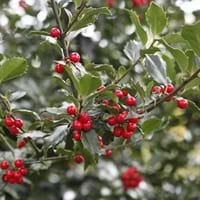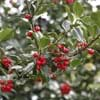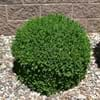Life Span
Perennial
Perennial
Type
Broadleaf Evergreen
Broadleaf Evergreen
Origin
Southwestern United States, Texas, Mexico, Central America
Japan
Types
Not Available
Bigleaf hydrangea, Hortensia, Smooth hydrangea, Oakleaf hydrangea, Annabelle
Number of Varieties
Not Available
Habitat
limestone outcrops, Open Plains
Forest edges, Hillside, Woods
USDA Hardiness Zone
7-11
6-10
AHS Heat Zone
Not Available
Not Available
Sunset Zone
Not Available
21,22
Habit
Oval/Rounded
Oval/Rounded
Flower Color
White, Ivory
Purple
Flower Color Modifier
Not Available
Bicolor
Fruit Color
Red, Orange
Red
Leaf Color in Spring
Green, Blue Green, Olive
Dark Green
Leaf Color in Summer
Green, Blue Green, Olive
Dark Green
Leaf Color in Fall
Green, Blue Green, Olive
Dark Green
Leaf Color in Winter
Green, Blue Green, Olive
Dark Green
Leaf Shape
Elliptic and Ovate
Oblovate
Plant Season
Spring, Summer, Fall, Winter
Spring, Summer, Fall, Winter
Sunlight
Full Sun, Partial Sun
Partial Sun, Partial shade, Full Shade
Type of Soil
Loam, Sand
Loam
The pH of Soil
Neutral, Alkaline
Acidic, Neutral
Soil Drainage
Well drained
Well drained
Bloom Time
Early Spring, Spring, Late Winter
Spring
Tolerances
Drought
Pollution, Drought, Salt
Where to Plant?
Container, Ground
Container, Ground
How to Plant?
Seedlings
Seedlings, Stem Planting
Plant Maintenance
Medium
Medium
Watering Requirements
Do not water frequently
Not Available
In Summer
Drought Tolerant, Average Water
Average Water
In Spring
Average Water
Moderate
In Winter
Average Water
Average Water
Soil pH
Neutral, Alkaline
Acidic, Neutral
Soil Type
Loam, Sand
Loam
Soil Drainage Capacity
Well drained
Well drained
Sun Exposure
Full Sun, Partial Sun
Partial Sun, Partial shade, Full Shade
Pruning
Remove dead or diseased plant parts
Remove damaged leaves, Remove dead branches, Remove dead leaves
Fertilizers
Not Available
All-Purpose Liquid Fertilizer
Pests and Diseases
Not Available
Red blotch
Plant Tolerance
Drought
Pollution, Drought, Salt
Flowers
Showy
Insignificant
Flower Petal Number
Single
Single
Foliage Texture
Medium
Medium
Foliage Sheen
Glossy
Glossy
Attracts
Birds
Bees, Flies
Allergy
Not Available
Chest tightness, Diarrhea, Dizziness, Nausea, Vomiting
Aesthetic Uses
Not Used For Aesthetic Purpose
Not Available
Beauty Benefits
Not Available
Not Available
Edible Uses
Yes
Not Available
Environmental Uses
Food for birds, Shelter for wildlife
Air purification
Medicinal Uses
Astringent
Fever, Kidney problems, Urinary tract problems
Part of Plant Used
Fruits, Wood
Flowers, Root
Other Uses
Used for making wheel hubs, tool handles, Used for woodware
Not Available
Used As Indoor Plant
No
Not Available
Used As Outdoor Plant
Yes
Yes
Garden Design
Edible, Feature Plant
Container, Feature Plant, Foundation, Hedges, Houseplant, Mixed Border, Topiary, Bonsai, Espalier
Botanical Name
ARBUTUS xalapensis
AUCUBA japonica f. longifolia 'Salicifolia'
Common Name
Lady's Leg, Manzanita, Texas Madrone
Japanese Aucuba, Japanese Laurel, Willowleaf Japanese Laurel
In Hindi
Texas Madrone
Hydrangea
In German
Texas Madrone
Hortensie
In French
Texas Madrone
Hortensia
In Spanish
Arbutus xalapensis
Hortensia
In Greek
Texas Madrone
υδραγεία
In Portuguese
Texas Madrone
Hortênsia
In Polish
Texas Madrone
Hortensja
In Latin
Texas Madrone
Hibiscus
Phylum
Tracheophyta
Not Available
Class
Magnoliopsida
Not Available
Order
Ericales
Not Available
Family
Ericaceae
Cornaceae
Genus
Arbutus
Not Available
Clade
Angiosperms, Asterids, Eudicots
Not Available
Tribe
Not Available
Not Available
Subfamily
Not Available
Not Available
Number of Species
Not Available
Not Available
Difference Between Texas Madrone and Japanese Laurel
If you are confused whether Texas Madrone or Japanese Laurel are same, here are some features about those plants to help you choose better. Many people think that these two plants have the same characteristics, but one can see Texas Madrone and Japanese Laurel Information and learn more about it. Fertilizers required for proper growth of Texas Madrone are Not Available, whereas for Japanese Laurel fertilizers required are All-Purpose Liquid Fertilizer. Hence, one should know the basic difference between Texas Madrone and Japanese Laurel if you are planning to have them in your garden to enhance its beauty.
<
Flowering PlantsImportance of Texas Madrone and Japanese Laurel
Want to have the most appropriate plant for your garden? You might want to know the importance of Texas Madrone and Japanese Laurel. Basically, these two plants vary in many aspects. Compare Texas Madrone and Japanese Laurel as they differ in many characteristics such as their life, care, benefits, facts, etc. Every gardener must at least have the slightest clue about the plants he wants to plant in his garden. Compare their benefits, which differ in many ways like facts and uses. The medicinal use of Texas Madrone is Astringent whereas of Japanese Laurel is Fever, Kidney problems and Urinary tract problems. Texas Madrone has beauty benefits as follows: Not Available while Japanese Laurel has beauty benefits as follows: Not Available.
Compare Facts of Texas Madrone vs Japanese Laurel
How to choose the best garden plant for your garden depending upon its facts? Here garden plant comparison will help you to solve this query. Compare the facts of Texas Madrone vs Japanese Laurel and know which one to choose. As garden plants have benefits and other uses, allergy is also a major drawback of plants for some people. Allergic reactions of Texas Madrone are Not Available whereas of Japanese Laurel have Chest tightness, Diarrhea, Dizziness, Nausea and Vomiting respectively. Having a fruit bearing plant in your garden can be a plus point of your garden. Texas Madrone has showy fruits and Japanese Laurel has showy fruits. Also Texas Madrone is not flowering and Japanese Laurel is not flowering . You can compare Texas Madrone and Japanese Laurel facts and facts of other plants too.



